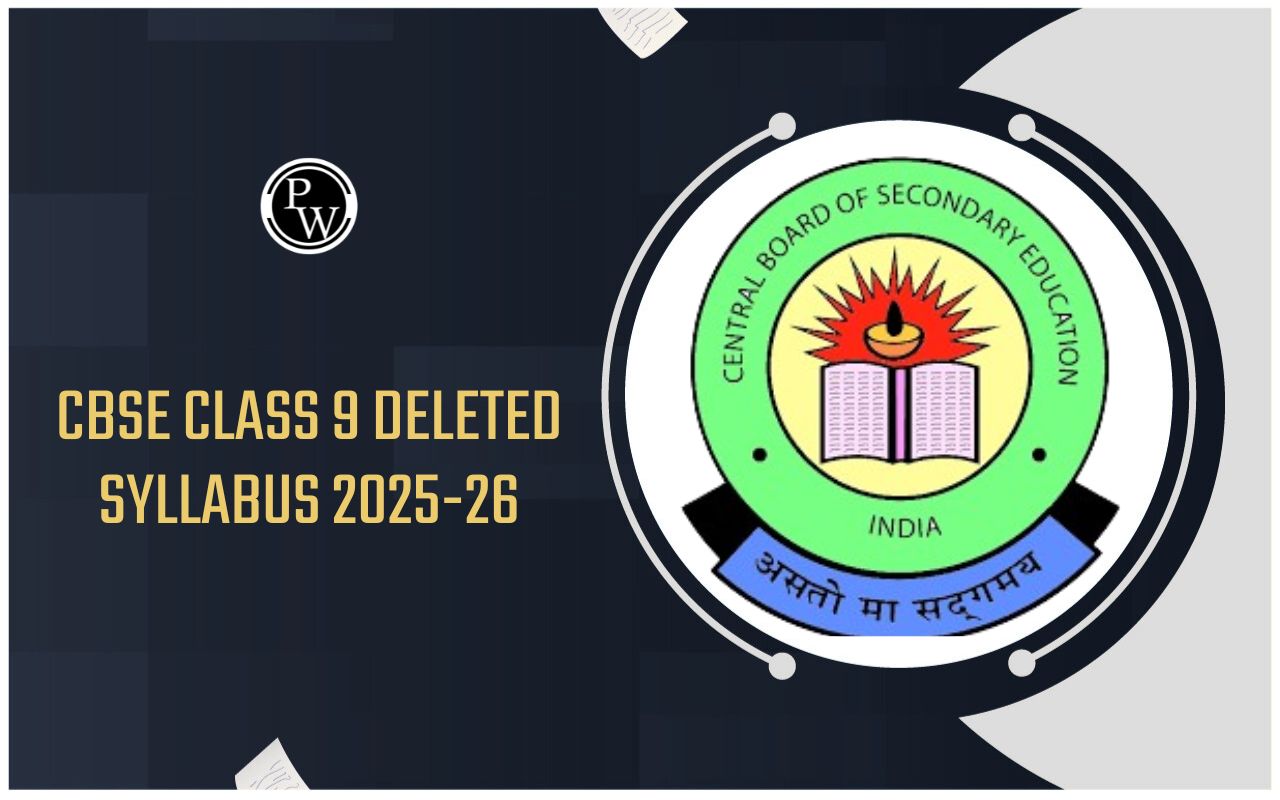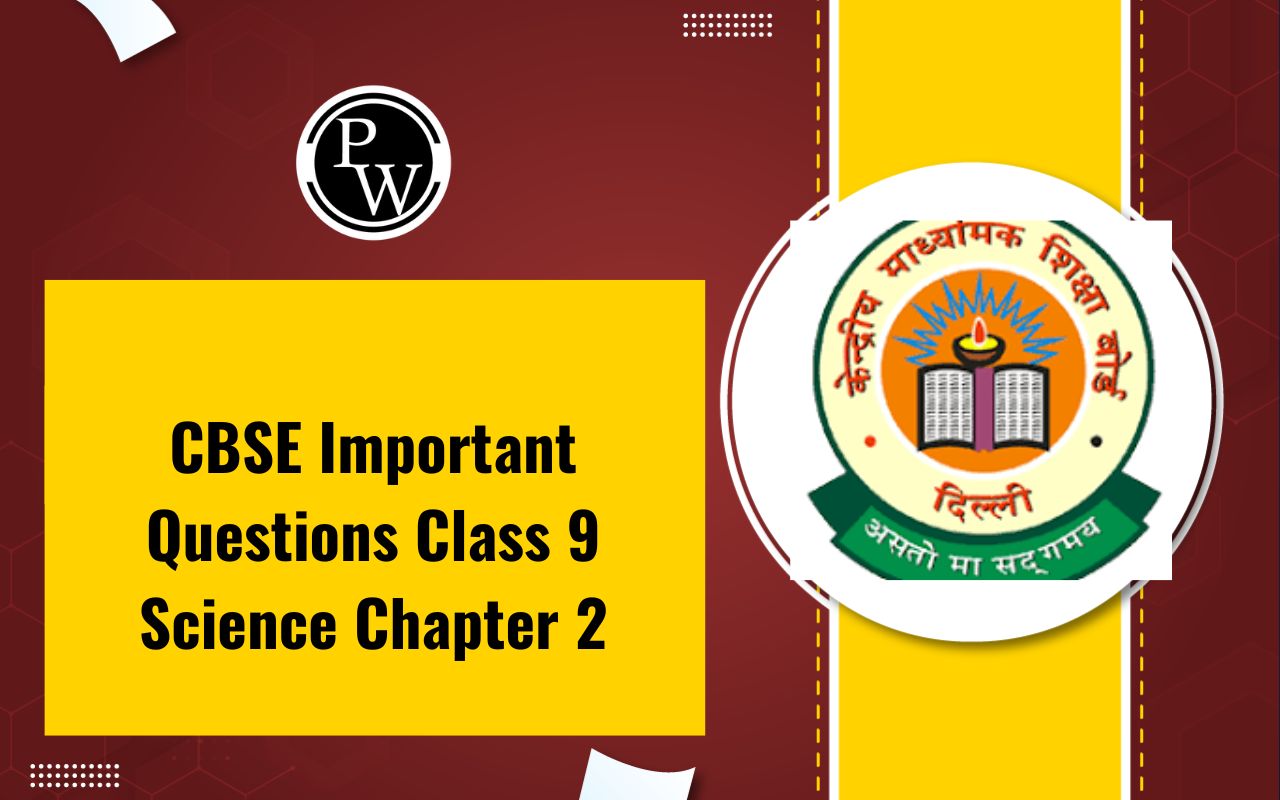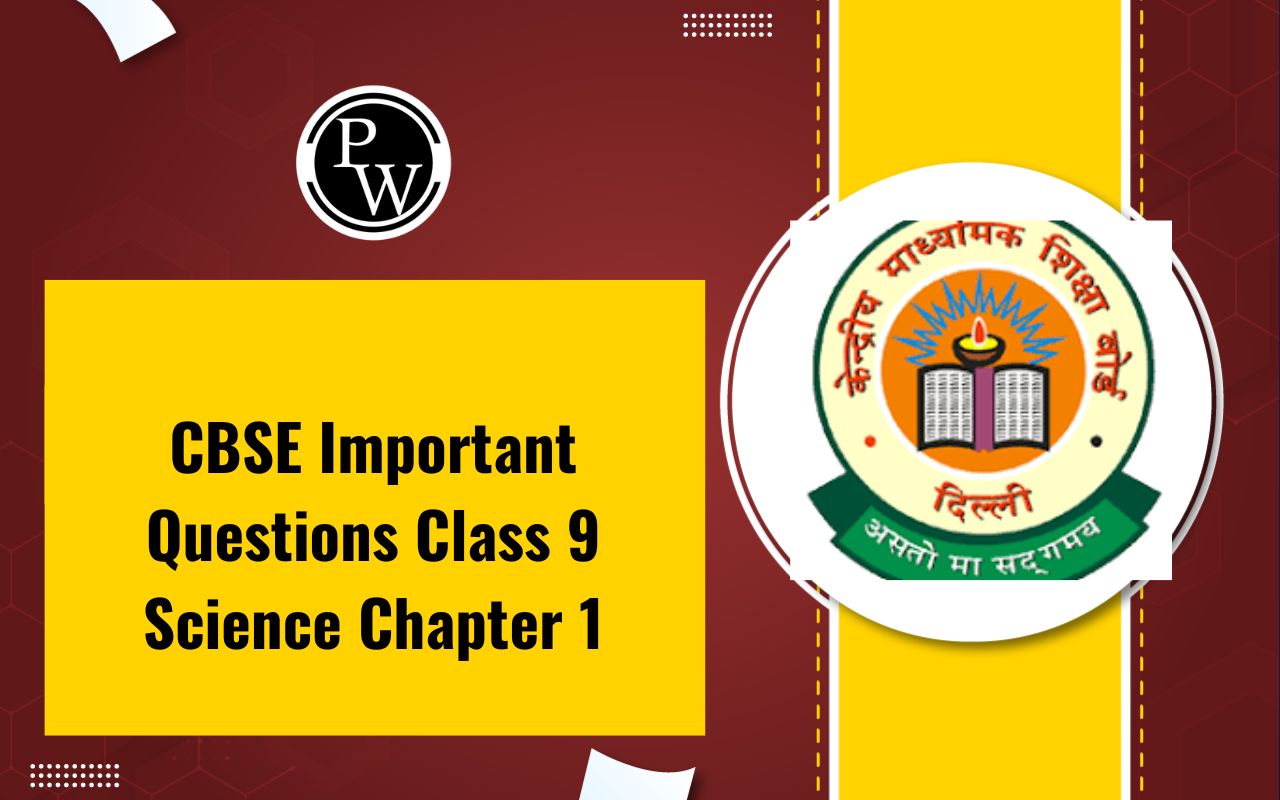
RD Sharma Solutions Class 9 Maths Chapter 10: In RD Sharma Solutions for Class 9 Maths Chapter 10, Congruent Triangles, you'll find help in understanding and solving problems related to triangles that are the same in size and shape. This chapter explains how to identify when triangles are congruent, based on their sides and angles.
By following the clear explanations and step-by-step solutions provided, you can easily grasp the concepts and conditions for congruent triangles. Practicing with these solutions will improve your problem-solving skills and prepare you well for exams.CBSE Class 9 Science Syllabus 2024-25
RD Sharma Solutions Class 9 Maths Chapter 10 Congruent Triangles PDF
You can find the PDF for RD Sharma Solutions Class 9 Maths Chapter 10 - Congruent Triangles by clicking the link below. This PDF has detailed solutions to help you understand congruent triangles better and do well in your math studies. Whether you're having trouble identifying congruent triangles or just want to improve your skills, this resource will walk you through each step.RD Sharma Solutions Class 9 Maths Chapter 10 PDF
RD Sharma Solutions Class 9 Maths Chapter 10 Congruent Triangles
Solutions for RD Sharma Class 9 Maths Chapter 10, focusing on Congruent Triangles, are provided below. These solutions are aimed at helping students understand and solve problems related to congruent triangles effectively. By following the step-by-step explanations provided, students can develop a deeper understanding of the concept of congruence and enhance their problem-solving skills. With these solutions, students can prepare thoroughly for exams and strengthen their grasp of congruent triangles.RD Sharma Solutions Class 9 Maths Chapter 10 Congruent Triangles Exercise 10.1
Question 1: In the figure, the sides BA and CA have been produced such that BA = AD and CA = AE. Prove that segment DE ∥ BC.

Solution :
Sides BA and CA have been produced such that BA = AD and CA = AE. To prove: DE ∥ BC Consider △ BAC and △DAE, BA = AD and CA= AE (Given) ∠BAC = ∠DAE (vertically opposite angles) By the SAS congruence criterion, we have △ BAC ≃ △ DAE We know corresponding parts of congruent triangles are equal So, BC = DE and ∠DEA = ∠BCA, ∠EDA = ∠CBA Now, DE and BC are two lines intersected by a transversal DB s.t. ∠DEA=∠BCA (alternate angles are equal) Therefore, DE ∥ BC. Proved.CBSE Class 10 Result 2024 Expected To Be Out Soon
Question 2: In a PQR, if PQ = QR and L, M and N are the mid-points of the sides PQ, QR and RP, respectively. Prove that LN = MN.
Solution:
Draw a figure based on the given instruction, In △PQR, PQ = QR and L, M, N are midpoints of the sides PQ, QP and RP, respectively (Given)
To prove: LN = MN
As two sides of the triangle are equal, so △ PQR is an isosceles triangle
PQ = QR and ∠QPR = ∠QRP ……. (i)
Also, L and M are midpoints of PQ and QR, respectively
PL = LQ = QM = MR = QR/2
Now, consider Δ LPN and Δ MRN,
LP = MR
∠LPN = ∠MRN [From (i)]
∠QPR = ∠LPN and ∠QRP = ∠MRN
PN = NR [N is the midpoint of PR]
By SAS congruence criterion,
Δ LPN ≃ Δ MRN
We know that the corresponding parts of congruent triangles are equal.
So LN = MN
Proved.
In △PQR, PQ = QR and L, M, N are midpoints of the sides PQ, QP and RP, respectively (Given)
To prove: LN = MN
As two sides of the triangle are equal, so △ PQR is an isosceles triangle
PQ = QR and ∠QPR = ∠QRP ……. (i)
Also, L and M are midpoints of PQ and QR, respectively
PL = LQ = QM = MR = QR/2
Now, consider Δ LPN and Δ MRN,
LP = MR
∠LPN = ∠MRN [From (i)]
∠QPR = ∠LPN and ∠QRP = ∠MRN
PN = NR [N is the midpoint of PR]
By SAS congruence criterion,
Δ LPN ≃ Δ MRN
We know that the corresponding parts of congruent triangles are equal.
So LN = MN
Proved.
Question 3: In the figure, PQRS is a square, and SRT is an equilateral triangle. Prove that
(i) PT = QT (ii) ∠ TQR = 15 0

Solution:
Given: PQRS is a square, and SRT is an equilateral triangle. To prove: (i) PT =QT and (ii) ∠ TQR =15° Now,PQRS is a square:
PQ = QR = RS = SP …… (i) And ∠ SPQ = ∠ PQR = ∠ QRS = ∠ RSP = 90 oAlso, △ SRT is an equilateral triangle:
SR = RT = TS …….(ii) And ∠ TSR = ∠ SRT = ∠ RTS = 60° From (i) and (ii) PQ = QR = SP = SR = RT = TS ……(iii) From figure, ∠TSP = ∠TSR + ∠ RSP = 60° + 90° = 150° and ∠TRQ = ∠TRS + ∠ SRQ = 60° + 90° = 150° => ∠ TSP = ∠ TRQ = 150 0 ………………… (iv) By SAS congruence criterion, Δ TSP ≃ Δ TRQ We know that the corresponding parts of congruent triangles are equal So, PT = QT Proved part (i). Now, consider Δ TQR. QR = TR [From (iii)] Δ TQR is an isosceles triangle. ∠ QTR = ∠ TQR [angles opposite to equal sides] The sum of angles in a triangle = 180 ∘ => ∠QTR + ∠ TQR + ∠TRQ = 180° => 2 ∠ TQR + 150° = 180° [From (iv)] => 2 ∠ TQR = 30° => ∠ TQR = 15 0 Hence proved part (ii).Question 4: Prove that the medians of an equilateral triangle are equal.
Solution:
Consider an equilateral △ABC, and Let D, E, and F are midpoints of BC, CA and AB. Here, AD, BE and CF are medians of △ABC.
Now,
D is the midpoint of BC => BD = DC
Similarly, CE = EA and AF = FB
Since ΔABC is an equilateral triangle
AB = BC = CA …..(i)
BD = DC = CE = EA = AF = FB …………(ii)
And also, ∠ ABC = ∠ BCA = ∠ CAB = 60° ……….(iii)
Consider Δ ABD and Δ BCE
AB = BC [From (i)]
BD = CE [From (ii)]
∠ ABD = ∠ BCE [From (iii)]
By SAS congruence criterion,
Δ ABD ≃ Δ BCE
=> AD = BE ……..(iv)
[Corresponding parts of congruent triangles are equal in measure]
Now, consider Δ BCE and Δ CAF,
BC = CA [From (i)]
∠ BCE = ∠ CAF [From (iii)]
CE = AF [From (ii)]
By SAS congruence criterion,
Δ BCE ≃ Δ CAF
=> BE = CF …………..(v)
[Corresponding parts of congruent triangles are equal]
From (iv) and (v), we have
AD = BE = CF
Median AD = Median BE = Median CF
The medians of an equilateral triangle are equal.
Hence proved
Here, AD, BE and CF are medians of △ABC.
Now,
D is the midpoint of BC => BD = DC
Similarly, CE = EA and AF = FB
Since ΔABC is an equilateral triangle
AB = BC = CA …..(i)
BD = DC = CE = EA = AF = FB …………(ii)
And also, ∠ ABC = ∠ BCA = ∠ CAB = 60° ……….(iii)
Consider Δ ABD and Δ BCE
AB = BC [From (i)]
BD = CE [From (ii)]
∠ ABD = ∠ BCE [From (iii)]
By SAS congruence criterion,
Δ ABD ≃ Δ BCE
=> AD = BE ……..(iv)
[Corresponding parts of congruent triangles are equal in measure]
Now, consider Δ BCE and Δ CAF,
BC = CA [From (i)]
∠ BCE = ∠ CAF [From (iii)]
CE = AF [From (ii)]
By SAS congruence criterion,
Δ BCE ≃ Δ CAF
=> BE = CF …………..(v)
[Corresponding parts of congruent triangles are equal]
From (iv) and (v), we have
AD = BE = CF
Median AD = Median BE = Median CF
The medians of an equilateral triangle are equal.
Hence proved
Question 5: In a Δ ABC, if ∠A = 120° and AB = AC. Find ∠B and ∠C.
Solution:
 To find: ∠ B and ∠ C.
Here, Δ ABC is an isosceles triangle since AB = AC
∠ B = ∠ C ……… (i)
[Angles opposite to equal sides are equal]
We know that the sum of angles in a triangle = 180°
∠ A + ∠ B + ∠ C = 180°
∠ A + ∠ B + ∠ B= 180° (using (i)
120
0
+ 2∠B = 180
0
2∠B = 180
0
– 120
0
= 60
0
∠ B = 30
o
Therefore, ∠ B = ∠ C = 30
∘
To find: ∠ B and ∠ C.
Here, Δ ABC is an isosceles triangle since AB = AC
∠ B = ∠ C ……… (i)
[Angles opposite to equal sides are equal]
We know that the sum of angles in a triangle = 180°
∠ A + ∠ B + ∠ C = 180°
∠ A + ∠ B + ∠ B= 180° (using (i)
120
0
+ 2∠B = 180
0
2∠B = 180
0
– 120
0
= 60
0
∠ B = 30
o
Therefore, ∠ B = ∠ C = 30
∘
Question 6: In a Δ ABC, if AB = AC and ∠ B = 70°, find ∠ A.
Solution:
Given: In a Δ ABC, AB = AC and ∠B = 70° ∠ B = ∠ C [Angles opposite to equal sides are equal] Therefore, ∠ B = ∠ C = 70 ∘ The sum of angles in a triangle = 180∘ ∠ A + ∠ B + ∠ C = 180 o ∠ A + 70 o + 70 o = 180 o ∠ A = 180 o – 140 o ∠ A = 40 oRD Sharma Solutions Class 9 Maths Chapter 10 Congruent Triangles Exercise 10.2
Question 1: In the figure, it is given that RT = TS, ∠ 1 = 2 ∠ 2 and ∠4 = 2(∠3). Prove that ΔRBT ≅ ΔSAT.

Solution:
In the figure, RT = TS ……(i) ∠ 1 = 2 ∠ 2 ……(ii) And ∠ 4 = 2 ∠ 3 ……(iii) To prove: ΔRBT ≅ ΔSAT Let the point of intersection RB and SA be denoted by O ∠ AOR = ∠ BOS [Vertically opposite angles] or ∠ 1 = ∠ 4 2 ∠ 2 = 2 ∠ 3 [From (ii) and (iii)] or ∠ 2 = ∠ 3 ……(iv) Now in Δ TRS, we have RT = TS => Δ TRS is an isosceles triangle ∠ TRS = ∠ TSR ……(v) But, ∠ TRS = ∠ TRB + ∠ 2 ……(vi) ∠ TSR = ∠ TSA + ∠ 3 ……(vii) Putting (vi) and (vii) in (v) we get ∠ TRB + ∠ 2 = ∠ TSA + ∠ 3 => ∠ TRB = ∠ TSA [From (iv)] Consider Δ RBT and Δ SAT RT = ST [From (i)] ∠ TRB = ∠ TSA [From (iv)] By the ASA criterion of congruence, we have Δ RBT ≅ Δ SATQuestion 2: Two lines, AB and CD, intersect at O such that BC is equal and parallel to AD. Prove that the lines AB and CD bisect at O.
Solution: Lines AB and CD Intersect at O
 Such that BC ∥ AD and
BC = AD …….(i)
To prove: AB and CD bisect at O.
First, we have to prove that Δ AOD ≅ Δ BOC
∠OCB =∠ODA [AD||BC and CD is transversal]
AD = BC [from (i)]
∠OBC = ∠OAD [AD||BC and AB is transversal]
By ASA Criterion:
Δ AOD ≅ Δ BOC
OA = OB and OD = OC (By c.p.c.t.)
Therefore, AB and CD bisect each other at O.
Hence Proved.
Such that BC ∥ AD and
BC = AD …….(i)
To prove: AB and CD bisect at O.
First, we have to prove that Δ AOD ≅ Δ BOC
∠OCB =∠ODA [AD||BC and CD is transversal]
AD = BC [from (i)]
∠OBC = ∠OAD [AD||BC and AB is transversal]
By ASA Criterion:
Δ AOD ≅ Δ BOC
OA = OB and OD = OC (By c.p.c.t.)
Therefore, AB and CD bisect each other at O.
Hence Proved.
Question 3: BD and CE are bisectors of ∠ B and ∠ C of an isosceles Δ ABC with AB = AC. Prove that BD = CE.
Solution:
Δ ABC is isosceles with AB = AC, and BD and CE are bisectors of ∠ B and ∠ C. We have to prove BD = CE. (Given) Since AB = AC
=> ∠ABC = ∠ACB ……(i)
[Angles opposite to equal sides are equal]
Since BD and CE are bisectors of ∠ B and ∠ C
∠ ABD = ∠ DBC = ∠ BCE = ECA = ∠B/2 = ∠C/2 …(ii)
Now, Consider Δ EBC = Δ DCB
∠ EBC = ∠ DCB [From (i)]
BC = BC [Common side]
∠ BCE = ∠ CBD [From (ii)]
By ASA congruence criterion, Δ EBC ≅ Δ DCB
Since corresponding parts of congruent triangles are equal.
=> CE = BD
or, BD = CE
Hence proved.
Since AB = AC
=> ∠ABC = ∠ACB ……(i)
[Angles opposite to equal sides are equal]
Since BD and CE are bisectors of ∠ B and ∠ C
∠ ABD = ∠ DBC = ∠ BCE = ECA = ∠B/2 = ∠C/2 …(ii)
Now, Consider Δ EBC = Δ DCB
∠ EBC = ∠ DCB [From (i)]
BC = BC [Common side]
∠ BCE = ∠ CBD [From (ii)]
By ASA congruence criterion, Δ EBC ≅ Δ DCB
Since corresponding parts of congruent triangles are equal.
=> CE = BD
or, BD = CE
Hence proved.
Exercise 10.3
Question 1: In two right triangles, one side and an acute angle of one triangle are equal to the corresponding side and angle of the other. Prove that the triangles are congruent.
Solution :
In two right triangles, one side and an acute angle of one triangle are equal to the corresponding side and angles of the other. (Given) To prove: Both triangles are congruent.
Consider two right triangles such that
∠ B = ∠ E = 90
o
…….(i)
AB = DE …….(ii)
∠ C = ∠ F ……(iii)
Here we have two right triangles, △ ABC and △ DEF
From (i), (ii) and (iii),
By the AAS congruence criterion, we have Δ ABC ≅ Δ DEF
Both triangles are congruent. Hence proved.
To prove: Both triangles are congruent.
Consider two right triangles such that
∠ B = ∠ E = 90
o
…….(i)
AB = DE …….(ii)
∠ C = ∠ F ……(iii)
Here we have two right triangles, △ ABC and △ DEF
From (i), (ii) and (iii),
By the AAS congruence criterion, we have Δ ABC ≅ Δ DEF
Both triangles are congruent. Hence proved.
Question 2: If the bisector of the exterior vertical angle of a triangle is parallel to the base, show that the triangle is isosceles.
Solution:
Let ABC be a triangle such that AD is the angular bisector of the exterior vertical angle, ∠EAC and AD ∥ BC. From figure,
∠1 = ∠2 [AD is a bisector of ∠ EAC]
∠1 = ∠3 [Corresponding angles]
and ∠2 = ∠4 [alternative angle]
From above, we have ∠3 = ∠4
This implies, AB = AC
Two sides, AB and AC, are equal.
=> Δ ABC is an isosceles triangle.
From figure,
∠1 = ∠2 [AD is a bisector of ∠ EAC]
∠1 = ∠3 [Corresponding angles]
and ∠2 = ∠4 [alternative angle]
From above, we have ∠3 = ∠4
This implies, AB = AC
Two sides, AB and AC, are equal.
=> Δ ABC is an isosceles triangle.
Question 3: In an isosceles triangle, if the vertex angle is twice the sum of the base angles, calculate the angles of the triangle.
Solution:
Let Δ ABC be isosceles where AB = AC and ∠ B = ∠ C Given: Vertex angle A is twice the sum of the base angles B and C. i.e., ∠ A = 2(∠ B + ∠ C) ∠ A = 2(∠ B + ∠ B) ∠ A = 2(2 ∠ B) ∠ A = 4(∠ B) Now, We know that the sum of angles in a triangle =180° ∠ A + ∠ B + ∠ C =180° 4 ∠ B + ∠ B + ∠ B = 180° 6 ∠ B =180° ∠ B = 30° Since, ∠ B = ∠ C ∠ B = ∠ C = 30° And ∠ A = 4 ∠ B ∠ A = 4 x 30° = 120° Therefore, the angles of the given triangle are 30° and 30° and 120°.Question 4: PQR is a triangle in which PQ = PR and is any point on the side PQ. Through S, a line is drawn parallel to QR and intersecting PR at T. Prove that PS = PT.
Solution: Given that PQR is a triangle such that PQ = PR and S is any point on the side PQ and ST ∥ QR.
To prove: PS = PT Since, PQ= PR, so △PQR is an isosceles triangle.
∠ PQR = ∠ PRQ
Now, ∠ PST = ∠ PQR and ∠ PTS = ∠ PRQ
[Corresponding angles as ST parallel to QR]
Since, ∠ PQR = ∠ PRQ
∠ PST = ∠ PTS
In Δ PST,
∠ PST = ∠ PTS
Δ PST is an isosceles triangle.
Therefore, PS = PT.
Hence proved.
Since, PQ= PR, so △PQR is an isosceles triangle.
∠ PQR = ∠ PRQ
Now, ∠ PST = ∠ PQR and ∠ PTS = ∠ PRQ
[Corresponding angles as ST parallel to QR]
Since, ∠ PQR = ∠ PRQ
∠ PST = ∠ PTS
In Δ PST,
∠ PST = ∠ PTS
Δ PST is an isosceles triangle.
Therefore, PS = PT.
Hence proved.
RD Sharma Solutions Class 9 Maths Chapter 10 Congruent Triangles Exercise 10.4
Question 1: In the figure, It is given that AB = CD and AD = BC. Prove that ΔADC ≅ ΔCBA.

Solution :
From the figure, AB = CD and AD = BC. To prove: ΔADC ≅ ΔCBA Consider Δ ADC and Δ CBA. AB = CD [Given] BC = AD [Given] And AC = AC [Common side] So, by the SSS congruence criterion, we have ΔADC≅ΔCBA Hence proved.Question 2: In a Δ PQR, if PQ = QR and L, M and N are the mid-points of the sides PQ, QR and RP, respectively. Prove that LN = MN.
Solution:
Given: In Δ PQR, PQ = QR and L, M and N are the mid-points of the sides PQ, QR and RP respectively To prove: LN = MN Join L and M, M and N, N and L
We have PL = LQ, QM = MR and RN = NP
[Since L, M and N are mid-points of PQ, QR and RP, respectively]
And also, PQ = QR
PL = LQ = QM = MR = PN = LR …….(i)
[ Using mid-point theorem]
MN ∥ PQ and MN = PQ/2
MN = PL = LQ ……(ii)
Similarly, we have
LN ∥ QR and LN = (1/2)QR
LN = QM = MR ……(iii)
From equations (i), (ii) and (iii), we have
PL = LQ = QM = MR = MN = LN
This implies, LN = MN
Hence Proved.
Join L and M, M and N, N and L
We have PL = LQ, QM = MR and RN = NP
[Since L, M and N are mid-points of PQ, QR and RP, respectively]
And also, PQ = QR
PL = LQ = QM = MR = PN = LR …….(i)
[ Using mid-point theorem]
MN ∥ PQ and MN = PQ/2
MN = PL = LQ ……(ii)
Similarly, we have
LN ∥ QR and LN = (1/2)QR
LN = QM = MR ……(iii)
From equations (i), (ii) and (iii), we have
PL = LQ = QM = MR = MN = LN
This implies, LN = MN
Hence Proved.
RD Sharma Solutions Class 9 Maths Chapter 10 Congruent Triangles Exercise 10.5
Question 1: ABC is a triangle, and D is the mid-point of BC. The perpendiculars from D to AB and AC are equal. Prove that the triangle is isosceles.
Solution:
Given: D is the midpoint of BC and PD = DQ in a triangle ABC. To prove: ABC is isosceles triangle. In △BDP and △CDQ
PD = QD (Given)
BD = DC (D is mid-point)
∠BPD = ∠CQD = 90
o
By RHS Criterion: △BDP ≅ △CDQ
BP = CQ … (i) (By CPCT)
In △APD and △AQD
PD = QD (given)
AD = AD (common)
APD = AQD = 90
o
By RHS Criterion: △APD ≅ △AQD
So, PA = QA … (ii) (By CPCT)
Adding (i) and (ii)
BP + PA = CQ + QA
AB = AC
Two sides of the triangle are equal, so ABC is an isosceles.
In △BDP and △CDQ
PD = QD (Given)
BD = DC (D is mid-point)
∠BPD = ∠CQD = 90
o
By RHS Criterion: △BDP ≅ △CDQ
BP = CQ … (i) (By CPCT)
In △APD and △AQD
PD = QD (given)
AD = AD (common)
APD = AQD = 90
o
By RHS Criterion: △APD ≅ △AQD
So, PA = QA … (ii) (By CPCT)
Adding (i) and (ii)
BP + PA = CQ + QA
AB = AC
Two sides of the triangle are equal, so ABC is an isosceles.
Question 2: ABC is a triangle in which BE and CF ar e, respectively, the perpendiculars to the sides AC and AB. If BE = CF, prove that Δ ABC is isosceles
Solution:
ABC is a triangle in which BE and CF are perpendicular to the sides AC and AB, respectively, s.t. BE = CF. To prove: Δ ABC is isosceles In Δ BCF and Δ CBE,
∠ BFC = CEB = 90
o
[Given]
BC = CB [Common side]
And CF = BE [Given]
By RHS congruence criterion: ΔBFC ≅ ΔCEB
So, ∠ FBC = ∠ EBC [By CPCT]
=>∠ ABC = ∠ ACB
AC = AB [Opposite sides to equal angles are equal in a triangle]
Two sides of triangle ABC are equal.
Therefore, Δ ABC is isosceles. Hence Proved.
In Δ BCF and Δ CBE,
∠ BFC = CEB = 90
o
[Given]
BC = CB [Common side]
And CF = BE [Given]
By RHS congruence criterion: ΔBFC ≅ ΔCEB
So, ∠ FBC = ∠ EBC [By CPCT]
=>∠ ABC = ∠ ACB
AC = AB [Opposite sides to equal angles are equal in a triangle]
Two sides of triangle ABC are equal.
Therefore, Δ ABC is isosceles. Hence Proved.
Question 3: If perpendiculars from any point within an angle on its arms are congruent. Prove that it lies on the bisector of that angle.
Solution:
 Consider an angle ABC and BP be one of the arms within the angle.
Draw perpendiculars PN and PM on the arms BC and BA.
In Δ BPM and Δ BPN,
∠ BMP = ∠ BNP = 90° [given]
BP = BP [Common side]
MP = NP [given]
By RHS congruence criterion: ΔBPM≅ΔBPN
So, ∠ MBP = ∠ NBP [ By CPCT]
BP is the angular bisector of ∠ABC.
Hence proved
Consider an angle ABC and BP be one of the arms within the angle.
Draw perpendiculars PN and PM on the arms BC and BA.
In Δ BPM and Δ BPN,
∠ BMP = ∠ BNP = 90° [given]
BP = BP [Common side]
MP = NP [given]
By RHS congruence criterion: ΔBPM≅ΔBPN
So, ∠ MBP = ∠ NBP [ By CPCT]
BP is the angular bisector of ∠ABC.
Hence proved
RD Sharma Solutions Class 9 Maths Chapter 10 Congruent Triangles Exercise 10.6 Page No: 10.66
Question 1: In Δ ABC, if ∠ A = 40° and ∠ B = 60°. Determine the longest and shortest sides of the triangle.
Solution: In Δ ABC, ∠ A = 40° and ∠ B = 60°
We know the sum of angles in a triangle = 180° ∠ A + ∠ B + ∠ C = 180° 40° + 60° + ∠ C = 180° ∠ C = 180° – 100° = 80° ∠ C = 80° Now, 40° < 60° < 80° => ∠ A < ∠ B < ∠ C => ∠ C is a greater angle and ∠ A is a smaller angle. Now, ∠ A < ∠ B < ∠ C We know the side opposite to a greater angle is larger, and the side opposite to a smaller angle is smaller. Therefore, BC < AC < AB AB is the longest and BC is the shortest side.Question 2: In a Δ ABC, if ∠ B = ∠ C = 45°, which is the longest side?
Solution: In Δ ABC, ∠ B = ∠ C = 45°
The sum of angles in a triangle = 180° ∠ A + ∠ B + ∠ C = 180° ∠ A + 45° + 45° = 180° ∠ A = 180° – (45° + 45°) = 180° – 90° = 90° ∠ A = 90° => ∠ B = ∠ C < ∠ A Therefore, BC is the longest side.| CBSE Class 9 Maths Syllabus | CBSE Class 9 Science Syllabus |
| CBSE Class 9 Computer Application Syllabus | CBSE Class 9 Social Science Syllabus |
RD Sharma Class 9 Solutions Maths Chapter 10 FAQs
What topics are covered in RD Sharma Class 9 Maths Chapter 10?
How can RD Sharma Solutions for Chapter 10 help me understand Congruent Triangles better?
Do RD Sharma Solutions for Chapter 10 include explanations for theorems and proofs related to Congruent Triangles?










